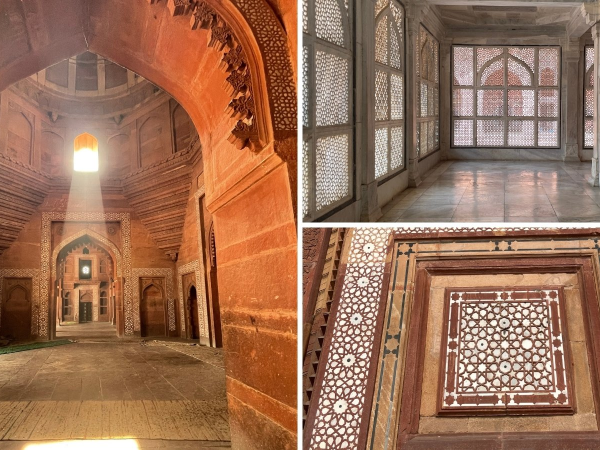The Geometry of Empire: Exploring the Mughal Design Language in Fatehpur Sikri
The Geometry of Empire is a five-part journey through the world of Mughal architecture from Delhi to Agra and Fatehpur Sikri. Each course explores a different building type within this remarkable era mausoleums, forts, palaces, and dargahs (shrines) revealing how geometry shaped every aspect of their design.
Students will learn how the Mughals used geometry not only as a decorative tool but also as a way of expressing order, harmony, and proportion. Through analytical drawings and historical study, the series connects art, mathematics, and built heritage.
By the end of the series, students will have developed a deep understanding of how geometry formed the foundation of Mughal design, how it was translated into stone and craft, and how it continues to influence the visual language of India today.
This four-week course explores the sacred geometry of Fatehpur Sikri, the grand fortified city built by Emperor Akbar on the outskirts of Agra. Once the capital of the Mughal Empire, this remarkable city stands as a masterpiece of planning, scale, and craftsmanship.
At its heart lie its spiritual structures of the Dargah of Salim Chishti, the Jama Masjid, and the monumental Buland Darwaza, which still marks the city’s dramatic entrance.
Students will explore a wide range of geometric systems found across the complex including 4-, 6-, 8-, 10-, 12-, and 14-fold grids. We will observe how these patterns appear in the site’s intricate jalis, rosettes, and surface ornamentation.
Booking Options
The Geometry of Empire is a five-part journey through the world of Mughal architecture from Delhi to Agra and Fatehpur Sikri. Each course explores a different building type within this remarkable era mausoleums, forts, palaces, and dargahs (shrines) revealing how geometry shaped every aspect of their design.
Students will learn how the Mughals used geometry not only as a decorative tool but also as a way of expressing order, harmony, and proportion. Through analytical drawings and historical study, the series connects art, mathematics, and built heritage.
By the end of the series, students will have developed a deep understanding of how geometry formed the foundation of Mughal design, how it was translated into stone and craft, and how it continues to influence the visual language of India today.
This four-week course explores the sacred geometry of Fatehpur Sikri, the grand fortified city built by Emperor Akbar on the outskirts of Agra. Once the capital of the Mughal Empire, this remarkable city stands as a masterpiece of planning, scale, and craftsmanship.
At its heart lie its spiritual structures of the Dargah of Salim Chishti, the Jama Masjid, and the monumental Buland Darwaza, which still marks the city’s dramatic entrance.
Students will explore a wide range of geometric systems found across the complex including 4-, 6-, 8-, 10-, 12-, and 14-fold grids. We will observe how these patterns appear in the site’s intricate jalis, rosettes, and surface ornamentation.


